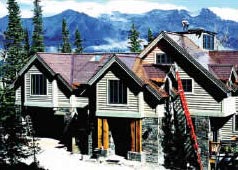January 13, 2005
FOR IMMEDIATE RELEASE
ORLANDO, FL— Recycling aluminum, plastic and glass products is second nature in many households today. But potential homebuyers don't often realize that building products made from copper, such as plumbing tube, electrical wire, roofing and gutters, are also recyclable.
"As the world's population continues to grow, and with it the demand for natural resources, builders and consumers alike have come to realize the importance of using recycled building materials," says Ken Geremia, communications manager of the Copper Development Association (CDA). "Smart builders educate their customers about copper's value as a 'green' metal, because they know that sustainable building is such an important housing issue today."
According to the National Association of Home Builders - which is currently developing green building guidelines for the residential construction industry - more than 13,000 eco-friendly homes were built in 2002 alone - a great improvement over the previous 11 years, when a total of only 18,887 green homes were built.
 Known for its beauty, ease-of-installation, long lifespan and high performance in extreme weather conditions, copper shingles are becoming a popular roofing material, especially among high-end homeowners.
Known for its beauty, ease-of-installation, long lifespan and high performance in extreme weather conditions, copper shingles are becoming a popular roofing material, especially among high-end homeowners.Photo Courtesy of Revere Copper Products
One reason for copper's longevity is its protective patina, a film that occurs when copper is exposed to the elements. Over time, the metal's shiny red exterior develops a blue-green (or nut brown, in arid locations) coating that protects it from deterioration. The Statue of Liberty is the best example of the patina that develops when copper is exposed to moist air.
Other practical attributes of copper roofs are fire resistance and the ability to withstand difficult weather conditions like high winds and heavy snowfall. Plus, many homeowners today like the look of a copper roof, which can distinguish their homes from the rest of the neighborhood.
Several manufacturers offer shingles today made largely from recycled copper, all of which are themselves 100% recyclable.
To learn more about the many architectural applications of copper, visit the Copper Development Association's Architecture section.
NOTE TO EDITORS: To download a high-resolution image for this story, click here.
###
